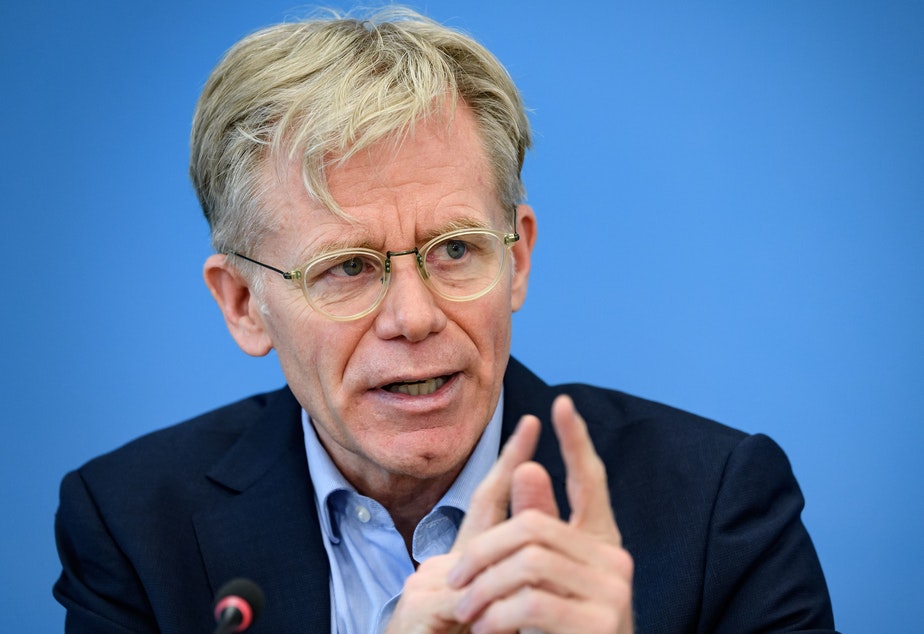Dr. Bruce Aylward has almost 30 years experience in fighting polio, Ebola and other diseases, and now, he’s turned his attention to stopping the spread of COVID-19.
Aylward, the senior adviser to the Director-General of the World Health Organization (WHO), is one of the world’s top officials in charge of fighting the coronavirus pandemic.
The doctor, who led a joint WHO mission to China in February to study the effectiveness of the coronavirus response in the country, has seen firsthand the measures Beijing took to fight the virus. Now he’s sharing what he learned with governments and communicating with the WHO response teams working to fight COVID-19 in virus epicenters around the globe.
In an extensive teleconference interview with TIME from his office in Geneva, Aylward shared what he thinks needs to be done to stop the pandemic, and what the future might hold.
The following excerpts from the conversation have been condensed and edited for clarity.
Do you expect COVID-19 to continue to spread?
We can get little glimpses into the future from places that are recently getting infected, places that aren’t infected, but also the places where it all started. And if you go back and look at China right now, they [identified the virus] in early January, they had a full on response, sort of threw everything at it, and it’s middle of March now and they estimate maybe end of March they’ll be coming out of it, so a full three months.
When you look around the world in Europe, North America, the Middle East, you can see that we’re really at the period of exponential growth, we’re still seeing the virus going up very, very rapidly, even in hard hit places like Italy, for example. These countries still have months of this challenge in front of them.
When you look to other parts of the world, like Africa, for example, and parts of the Indian subcontinent you can see that it’s just beginning. Even though they have very, very few cases, if you look carefully at that curve, it’s also in a phase of exponential growth.
What do you think the coronavirus pandemic will look like six months from now?
I expect we will be emerging—still with disease in various parts of the world—but we should be emerging from a bad wave of this disease across a large swathe of the planet. The challenge is we’re going to be back into the flu season. And one of the big questions is, are we going to see a surge of it again at that period?
Looking further into the future, what do you anticipate? Will COVID-19 ever disappear?
What it looks like is that we’re going to have a substantial wave of this disease right through basically the globe unless something very different happens in the southern hemisphere. And the question then is: What’s going to happen? Is this going to disappear completely? Are we going to get into a period of cyclical waves? Or are we going to end up with low level endemic disease that we have to deal with? Most people believe that that first scenario where this might disappear completely is very, very unlikely, it just transmits too easily in the human population, so more likely waves or low level disease.
A lot of that is going to depend on what we as countries, as societies, do. If we do the testing of every single case, rapid isolation of the cases, you should be able to keep cases down low. If you simply rely on the big shut down measures without finding every case, then every time you take the brakes off, it could come back in waves. So that future frankly, may be determined by us and our response as much as the virus.
The U.S. and Europe had quite a head start to get ready for this. Was a major outbreak inevitable, or could it have been stopped?
I don’t like to use the word “squandered,” that’s a big word. But we probably haven’t optimized how we used that time. Now what we’ve done is, we’ve gained time again by putting in place these big shutdowns. All they do is they buy time, they don’t actually stop the virus, they suppress it, they slow it. What you want to do now is use that time well to get the testing in place, to get the systems in place, so that you can actually manage the individual level cases that are going to be fundamental to stopping this.
And the big question right now is “Are countries going to use this time during these shutdown periods optimally?” Because if you just shut it down your societies, your economies and hope for the best… This is guerrilla warfare against a virus, the virus is just going to sit you out, it’ll just circulate quietly among households and then you’re going to let them all go again and phoom there’s no reason it shouldn’t take off again, unless you’re ready for it.
Time












